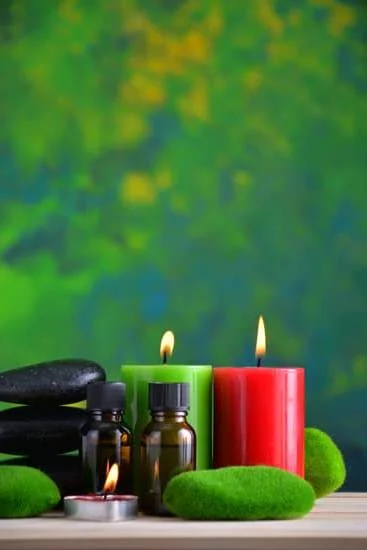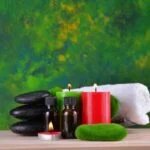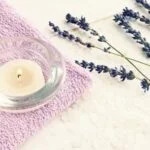Aromatherapy has been used for centuries as a natural way to promote relaxation, uplift mood, and alleviate various ailments. Aromatherapy patches are a modern take on this ancient practice, offering a convenient and discreet way to experience the benefits of essential oils throughout the day. In this article, we will explore how to make aromatherapy patches at home and delve into the science behind these powerful fragrances.
Aromatherapy patches are small, portable squares infused with essential oils that can be worn directly on the skin or attached to clothing. These patches slowly release the therapeutic aroma of the essential oils throughout the day, allowing users to experience their healing properties wherever they go. From promoting relaxation and stress relief to boosting energy and focus, aromatherapy patches offer a wide range of benefits for both physical and emotional well-being.
The key to making effective aromatherapy patches lies in understanding the science behind essential oils and their healing properties. By carefully selecting the right materials and crafting custom blends, you can create personalized aromatherapy patches tailored to your specific needs.
In the following sections, we will explore the process of making these patches at home, from choosing the right fabric and essential oils to creating custom blends for relaxation, energy, and stress relief. Whether you are new to aromatherapy or a seasoned enthusiast, learning how to make your own aromatherapy patches can open up a world of wellness possibilities.
The Science Behind Aromatherapy
Aromatherapy has been used for centuries as a natural way to promote healing, relaxation, and overall well-being. Aromatherapy patches are a convenient and effective way to enjoy the benefits of essential oils throughout the day. Before delving into how to make aromatherapy patches, it’s important to understand the science behind aromatherapy and the healing properties of essential oils.
Essential oils are aromatic compounds extracted from plants through distillation or cold-pressing. These oils contain the natural essences of the plant, including its fragrance and beneficial properties. When inhaled or applied to the skin, essential oils can have various therapeutic effects on the body and mind. For example, lavender oil is known for its calming properties, while peppermint oil can help alleviate headaches and improve focus.
Each essential oil contains different chemical constituents that contribute to its unique therapeutic benefits. For instance, some essential oils have analgesic properties that can reduce pain and inflammation, while others have antibacterial or antiviral effects that can support the immune system. Understanding these chemical components is crucial when selecting essential oils for aromatherapy patches based on their intended use.
When making aromatherapy patches, it’s important to choose high-quality essential oils that are pure and undiluted. Diluted or synthetic oils may not have the same therapeutic effects as pure essential oils. Additionally, selecting an appropriate fabric for the patches is essential in ensuring that the oils are properly absorbed and retained for long-lasting aroma therapy.
| Essential Oil | Beneficial Properties |
|---|---|
| Lavender | Calming, promotes relaxation |
| Peppermint | Relieves headaches, improves focus |
| Tea Tree | Antibacterial, supports immune system |
Choosing the Right Materials
Choosing Fabric for Aromatherapy Patches
When it comes to choosing the fabric for your aromatherapy patches, it’s important to opt for a material that is both breathable and absorbent. Cotton and muslin are popular choices due to their natural properties, which allow the essential oils to be absorbed without causing irritation to the skin. Additionally, these fabrics are soft and gentle, making them perfect for use on sensitive areas of the body.
Selecting Essential Oils for Aromatherapy Patches
The selection of essential oils plays a significant role in the effectiveness of your aromatherapy patches. Different essential oils offer various therapeutic benefits, so it’s essential to choose ones that align with your specific needs or desired effects. For example, lavender oil is known for its calming properties, while peppermint oil can help boost energy and alleviate headaches. It’s crucial to research each oil’s properties and potential side effects before incorporating them into your patches.
Tips for Selecting Materials
When selecting materials for your aromatherapy patches, consider any allergies or sensitivities you or others may have. It’s best to test a small amount of diluted essential oil on a patch of skin before applying it to ensure there are no adverse reactions. Additionally, opting for high-quality fabric and pure essential oils will contribute to the overall effectiveness and safety of your homemade aromatherapy patches.
By carefully selecting the fabric and essential oils for your DIY aromatherapy patches, you can create a personalized product that caters to your specific wellness needs. Pay attention to quality, safety considerations, and individual preferences when choosing materials for an optimal aromatherapy experience.
DIY Aromatherapy Patch Tutorial
Aromatherapy patches are a convenient and effective way to experience the benefits of essential oils throughout the day. Whether you’re looking for relaxation, energy, or stress relief, creating your own aromatherapy patches allows you to customize the experience to suit your needs. In this section, we will provide a step-by-step guide on how to make aromatherapy patches at home.
To make aromatherapy patches, you will need a few key materials. First, select a fabric that is porous and allows the essential oils to evaporate slowly. Cotton or linen work well for this purpose. Next, choose the essential oils you want to use based on their therapeutic properties. For relaxation, consider lavender or chamomile. For energy, try peppermint or citrus oils. And for stress relief, opt for eucalyptus or frankincense.
Once you have gathered your materials, you can begin making your aromatherapy patches. Start by cutting the fabric into small squares or circles, depending on your preference. Then, place a few drops of your chosen essential oil onto the fabric. Be sure not to oversaturate the fabric – a little goes a long way with essential oils. Finally, allow the patch to dry completely before using it.
By following these simple steps, you can create your own customized aromatherapy patches tailored to your specific wellness needs. Whether you want to promote relaxation, boost energy levels, or alleviate stress, making aromatherapy patches at home allows you to harness the therapeutic power of essential oils in a convenient and portable form.
| Materials Needed | Key Essential Oils |
|---|---|
| Fabric (cotton or linen) | Lavender (relaxation) |
| Scissors | Peppermint (energy) |
| Essential Oils | Eucalyptus (stress relief) |
Tips and Tricks for Effective Aromatherapy Patch Usage
Wearing and Applying Aromatherapy Patches
When using aromatherapy patches, it’s important to understand the best practices for wearing and applying them. The patches should be applied to clean, dry skin in an area where they will not be easily rubbed off or come into contact with water. Some common placement areas include the chest, upper arms, or upper back. Make sure to press down firmly on the patch to ensure it adheres properly.
Duration and Frequency of Use
Aromatherapy patches can typically be worn for a period of 6-8 hours, which is perfect for all-day support. However, if you are sensitive to essential oils or experiencing any discomfort, it’s best to remove the patch immediately. For maximum benefits, consider using aromatherapy patches on a consistent basis. Depending on your needs and preferences, you can wear them daily or as needed for specific situations.
Extending the Life of Your Aromatherapy Patches
To prolong the effectiveness of your aromatherapy patches, store them in a cool, dark place when not in use. This will help preserve the integrity of the essential oils and prevent them from losing their potency. Additionally, consider placing each patch in a resealable plastic bag after use to maintain its fragrance and therapeutic properties. By following these simple storage tips, you can ensure that your aromatherapy patches remain effective for as long as possible.
Aromatherapy Patch Recipes
Aromatherapy patches are a fantastic way to benefit from the healing properties of essential oils throughout the day. By creating custom blends, you can tailor your aromatherapy experience to meet your specific needs, whether that’s relaxation, energy, or stress relief. Below are some tried and true aromatherapy patch recipes that you can easily make at home.
Custom Blend Recipes for Aromatherapy Patches:
1. Relaxation Blend:
Simply mix these essential oils together and follow the DIY tutorial for making aromatherapy patches to create a soothing blend perfect for promoting relaxation and calmness.
2. Energy Blend:
This invigorating blend is great for providing a natural energy boost throughout the day. Apply it to your aromatherapy patch and breathe in the revitalizing scent whenever you need a pick-me-up.
3. Stress Relief Blend:
For times when you’re feeling stressed or anxious, this calming blend can help promote feelings of tranquility and reduce tension. Follow our step-by-step guide on how to make aromatherapy patches using these oils to create your own stress relief remedy.
Whether you’re looking to relax, increase your energy levels, or alleviate stress, these custom blends offer you a way to enhance your well-being with the power of aromatherapy patches.
Safety Precautions and Storage Tips for Aromatherapy Patches
When using aromatherapy patches, it’s important to prioritize safety and proper storage to ensure the effectiveness and longevity of your DIY creations. Here are some key safety precautions and storage tips to keep in mind when making and using aromatherapy patches:
Safety Precautions:
– Always dilute essential oils: Essential oils are highly concentrated and can cause skin irritation or allergic reactions if applied directly. Make sure to dilute them with a carrier oil, such as almond oil or coconut oil, before applying them to the fabric for your patches.
– Patch test: Before applying an aromatherapy patch to a larger area of skin, perform a patch test by applying a small amount of the diluted essential oil blend to a small area. Monitor for any adverse reactions before full use.
Storage Tips:
1. Store in a cool, dark place: Exposure to light and heat can degrade the quality of essential oils over time. Keep your aromatherapy patches in a cool, dark place, away from direct sunlight or sources of heat.
2. Use airtight containers: When not in use, store your aromatherapy patches in airtight containers to prevent evaporation and oxidation of the essential oils.
3. Label with creation date and ingredients: To ensure you know when your aromatherapy patches were made and what essential oils were used, label each container with the creation date and ingredients used in the blend.
By following these safety precautions and storage tips, you can confidently enjoy the benefits of aromatherapy patches while ensuring their effectiveness and safety for use.
Conclusion
In conclusion, aromatherapy patches are a convenient and effective way to incorporate the benefits of essential oils into your daily routine. By understanding the science behind aromatherapy and selecting the right materials, you can create personalized patches tailored to your specific needs. Whether you’re looking for relaxation, energy, or stress relief, there are custom blend recipes available to suit your preferences.
By following a DIY tutorial and utilizing tips and tricks for effective usage, you can ensure that you are making the most out of your aromatherapy patches. It’s important to remember safety precautions and storage tips in order to prolong the shelf life of your patches and prevent any adverse reactions. Additionally, by embracing the healing power of aromatherapy patches in your daily life, you can experience the therapeutic benefits of essential oils wherever you go.
Incorporating aromatherapy patches into your lifestyle is a simple yet powerful way to elevate your well-being. The ability to create custom blends and tailor them to your individual needs gives you control over the healing properties that you want to experience. With some basic materials and understanding of essential oils, anyone can learn how to make aromatherapy patches and enjoy their holistic benefits. Start experiencing a new level of wellness by incorporating aromatherapy patches into your daily routine today.
Frequently Asked Questions
How Do You Make Homemade Aromatherapy?
Making homemade aromatherapy involves blending essential oils with a carrier oil or water to create a pleasing scent for use in diffusers, spritzers, or massage oils. It’s important to research the properties and safety guidelines of each essential oil before using them.
What Is Aromatherapy Patch?
An aromatherapy patch is a small adhesive patch infused with essential oils that can be applied directly to the skin. The heat from the body activates the release of the aroma, allowing for continuous inhalation of the therapeutic scents throughout the day.
How Do You Make Aromatherapy Blends?
Making aromatherapy blends requires selecting complementary essential oils and diluting them with a carrier oil or alcohol. Each oil has different properties and benefits, so it’s important to research and experiment to find the right combination for your intended use, whether it’s for relaxation, energy, or focus.

Are you looking for a natural way to improve your health and wellbeing?
If so, aromatherapy may be the answer for you.





